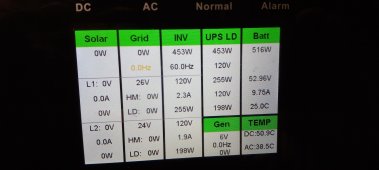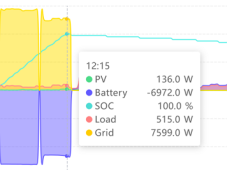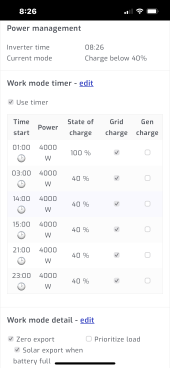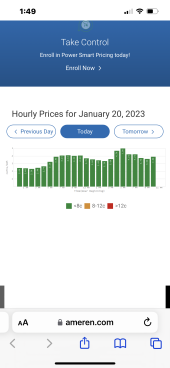Can someone confirm a fairly related question:
Is it normal for a Sol-ark 12K that is Off-Grid/ no Grid Input going into the Grid Breaker, to show small Voltage readings on the GEN section of the onboard Display.
Likewise also showing small AC Voltage on L1 and L2?
Im fairly certain this began right after the last update dongle I installed and that I called and asked about it etc... otherwise I may need to start looking for a Ground Loop coming from the array?
Since its doing it on both the GEN section and the Grid section this seems like it was part of the firmware/ called something like "Polling" etc.... but since the L1 and L2 are showing different Voltages it still gives me cause for concern
Is it normal for a Sol-ark 12K that is Off-Grid/ no Grid Input going into the Grid Breaker, to show small Voltage readings on the GEN section of the onboard Display.
Likewise also showing small AC Voltage on L1 and L2?
Im fairly certain this began right after the last update dongle I installed and that I called and asked about it etc... otherwise I may need to start looking for a Ground Loop coming from the array?
Since its doing it on both the GEN section and the Grid section this seems like it was part of the firmware/ called something like "Polling" etc.... but since the L1 and L2 are showing different Voltages it still gives me cause for concern






